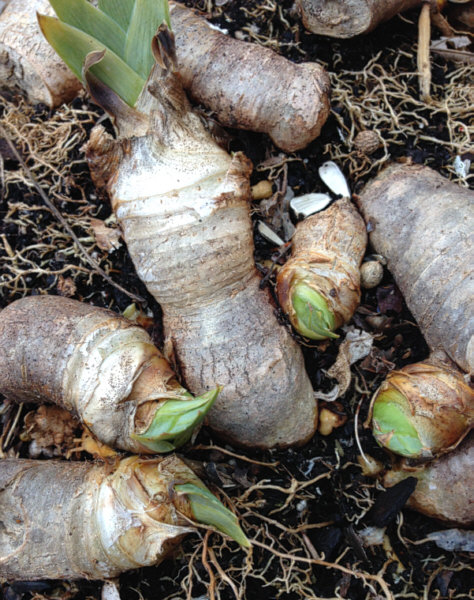Size and of iris rhizomes and length/quantity roots has nothing to do with ability of the plant to bloom, it’s more a function of different varieties and time of year and overall growing conditions. East coast and mountain grown rhizomes are generally smaller overall then west coast rhizomes. Oh Lord. look at my dirty nails. I seem to sport gardeners manicure near every day that I am out in the garden!!! I hate wearing gloves.
 This picture shows a rhizome of blooming size in early spring. Note, it’s only about the size of my thumb (I have smallish hands). How do you know it’s blooming size? There’s 2 ways to tell. One is to count the fan leaves, include leaf scars when counting. Most varieties will need 7-13 leaves for bloom. The other indicator of maturity is the presence of baby shoots or nubs near the top.
This picture shows a rhizome of blooming size in early spring. Note, it’s only about the size of my thumb (I have smallish hands). How do you know it’s blooming size? There’s 2 ways to tell. One is to count the fan leaves, include leaf scars when counting. Most varieties will need 7-13 leaves for bloom. The other indicator of maturity is the presence of baby shoots or nubs near the top.
So to answer the question “Is bigger better” I have to offer a strong “no”.
